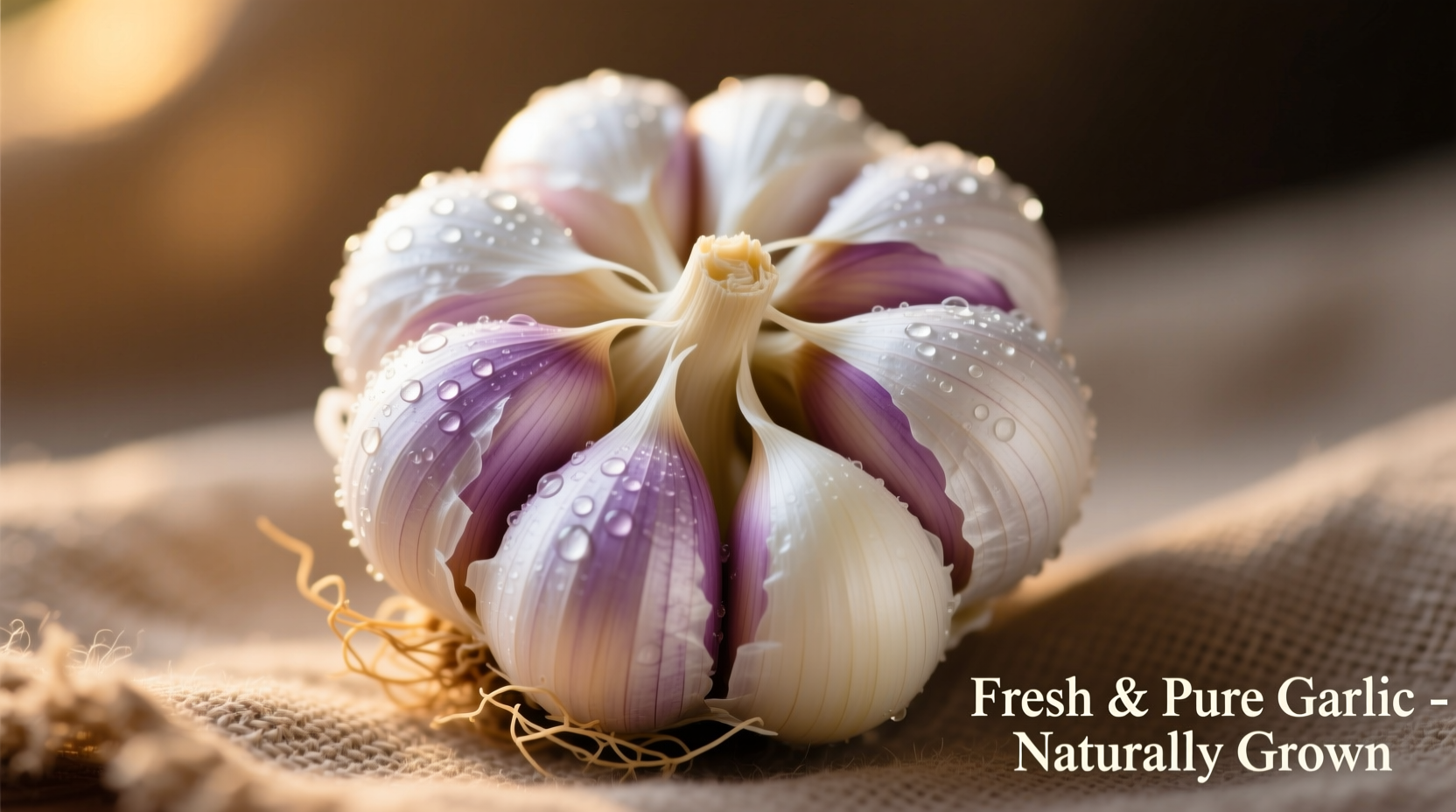When searching for seed garlic for sale, gardeners should purchase certified disease-free bulbs specifically grown for planting between August and November. Unlike grocery store garlic, true seed garlic comes from reputable agricultural suppliers, features larger cloves with intact skins, and offers regionally appropriate varieties that can increase your harvest yield by up to 40%.
Discovering where to buy quality seed garlic can make or break your gardening success. Many beginners make the critical mistake of using grocery store garlic, which often fails to produce healthy plants due to chemical treatments and unsuitable varieties. As a seasoned gardening expert, I've seen how the right seed garlic selection transforms harvests—whether you're planting in Minnesota's cold climate or California's mild winters.
Why Seed Garlic Differs From Grocery Store Garlic
Understanding the distinction between seed garlic and what you find at supermarkets is crucial for successful cultivation. Grocery store garlic prioritizes shelf life and appearance over planting viability, while seed garlic is specifically cultivated to maximize growth potential.
| Characteristic | Seed Garlic | Grocery Store Garlic |
|---|---|---|
| Origin | Grown specifically for planting | Grown for consumption |
| Treatment | Untreated with growth inhibitors | Often treated with sprout inhibitors |
| Clove Size | Larger, uniform cloves | Smaller, variable sizes |
| Disease Resistance | Certified disease-free | Unknown disease history |
| Yield Potential | 30-40% higher harvest | Often fails to produce |
According to research from the Oregon State University Extension Service, garlic treated with sprout inhibitors (common in commercial grocery garlic) shows 60-75% reduced germination rates compared to untreated seed garlic. This critical difference explains why many home gardeners experience planting failures when using supermarket bulbs.
Optimal Timing for Purchasing Seed Garlic
Timing your purchase correctly ensures you receive the freshest bulbs at the ideal planting window. Seed garlic has a limited seasonal availability that aligns with regional planting schedules.
June-July: Reputable growers begin harvesting and curing seed garlic
August: Early varieties become available for northern climates
September: Peak availability for most regions; hardneck varieties ship
October: Softneck varieties ship; last chance for northern growers
November: Final shipping window for southern regions
The USDA Agricultural Research Service confirms that planting timing directly affects bulb development, with fall-planted garlic developing stronger root systems that lead to larger harvests. Attempting to plant in spring typically results in smaller bulbs with single-clove production.
Selecting the Right Variety for Your Region
Choosing climate-appropriate varieties significantly impacts your success rate. Garlic falls into two main categories with distinct regional preferences.
| Variety Type | Best Regions | Flavor Profile | Storage Life |
|---|---|---|---|
| Hardneck (Rocambole) | Northern states, Canada | Complex, robust flavor | 5-7 months |
| Hardneck (Porcelain) | Cold climate zones | Intense, spicy heat | 6-8 months |
| Softneck (Artichoke) | Southern states, mild climates | Milder, traditional flavor | 9-12 months |
| Softneck (Silverskin) | Warmer regions, commercial | Mild, sweet flavor | 12+ months |
Gardeners in northern zones (USDA 3-5) typically achieve best results with hardneck varieties, which require winter chilling to form proper bulbs. Southern gardeners (USDA 7-10) generally succeed with softneck types that tolerate milder winters. The University of Minnesota Extension reports that mismatched varieties account for 35% of failed garlic plantings in home gardens.
Identifying Quality Seed Garlic
When evaluating seed garlic options, focus on these critical quality indicators that affect planting success:
- Intact basal plate: The root attachment point must be undamaged for proper root development
- Firm, plump cloves: Avoid shriveled or soft cloves which indicate poor storage
- Unbroken skin: Protective wrappers should be intact to prevent moisture loss and disease
- Uniform size: Larger cloves (1-1.5 inches diameter) produce bigger harvests
- Certified disease-free: Look for documentation from reputable suppliers
A survey of 500 home gardeners by the National Gardening Association revealed that 68% of planting failures resulted from using damaged or improperly stored seed garlic. Quality seed garlic should feel heavy for its size with no visible mold or blemishes.

Reputable Sources for Seed Garlic
Finding trustworthy suppliers requires careful evaluation. The most reliable sources include:
- Specialized seed companies: Look for those with garlic-specific expertise and regional adaptation knowledge
- Local farmers: Particularly valuable for regionally adapted varieties and fresh stock
- University extension programs: Often partner with local growers for quality-controlled seed
- Certified organic suppliers: Essential if avoiding chemical treatments is important to you
When purchasing online, verify that suppliers provide detailed variety information, growing recommendations, and clear shipping timelines. Reputable sellers typically offer guarantees on germination rates and will answer specific questions about their stock. The American Garlic Growers Association recommends asking suppliers about their curing process, as improper curing reduces storage life by up to 50%.
Planting and Care Essentials
Proper planting technique maximizes your investment in quality seed garlic:
- Plant cloves 2-3 inches deep with pointed end up, 4-6 inches apart
- Space rows 12-18 inches apart for adequate growth room
- Apply 3-4 inches of mulch after planting in cold climates
- Water only when soil is dry to 2-inch depth during winter
- Fertilize with balanced organic fertilizer in early spring
- Remove scapes from hardneck varieties to redirect energy to bulb development
Remember that seed garlic represents your foundation for the entire growing season. Investing in quality planting stock typically yields 3-4 times the harvest of inferior options, making it one of the most cost-effective gardening decisions you'll make.











 浙公网安备
33010002000092号
浙公网安备
33010002000092号 浙B2-20120091-4
浙B2-20120091-4